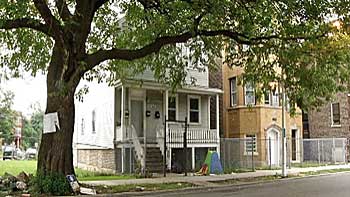Future Now
The IFTF Blog
How Block by Block Creativity can Mute the Effects of Inequality
Thanks to the recent works of Thomas Shapiro of the Institute for Asset Studies, Emanuel Saez of the University of California and Thomas Piketty’s new battleship of a book, Capital in the 21st Century, the corrosive effects of gross economic inequality are gaining recognition beyond academic and philanthropic circles and turning up on the lips of broader audiences. Last winter, UN Secretary General Ban Ki-moon’s remark that “as inequalities widen, the social fabric of our societies is both stretched and strained,” and President Barack Obama’s declaration that “inequality is the defining project of our generation” offered strong indicators that global policymakers with foresight are beginning to coalesce around solutions.
 But as politicians grapple with these issues on a long-term macro scale, what kinds of things can be effective on a local, or micro level in the here and now? Here in Chicago, a novel program generated by local residents and agreed to by the city is taking off. Its called Empty Lots. As part of a larger housing plan, residents are allowed to purchase for $1 one or two of the city’s total of 5000 city-owned vacant lots. Starting on the south side in Englewood and Greater Grand Crossing, which are both high-crime neighborhoods with median incomes of about $30,000 per household, there are already more than 200 buyers. Qualifications are simple, but important:
But as politicians grapple with these issues on a long-term macro scale, what kinds of things can be effective on a local, or micro level in the here and now? Here in Chicago, a novel program generated by local residents and agreed to by the city is taking off. Its called Empty Lots. As part of a larger housing plan, residents are allowed to purchase for $1 one or two of the city’s total of 5000 city-owned vacant lots. Starting on the south side in Englewood and Greater Grand Crossing, which are both high-crime neighborhoods with median incomes of about $30,000 per household, there are already more than 200 buyers. Qualifications are simple, but important:
- purchasers must live or own property on the same block as the lot they're buying,
- purchasers must pay property taxes going forward,
- purchasers cannot be indebted to the city for back taxes or other payments, and
- purchasers must maintain the land.
Empty Lots is encouraging potential block by block creatives to come forward. “I’ve heard of urban gardens, a fountain of some sort, some sort of very easily maintained thing that kids can play on,” South Side resident and buyer Asiaha Butler told the Chicago Tribune about her plans for some lots. “I'm hoping that it'll get more homeowners to work together on a project to beautify some of these lots. I personally want art, like I want some huge art sculpture, or dog park.” All improvements will have to be self-funded.
Empty Lots is not such a great leap in that in some cases, local residents were caring for these eyesore lots themselves anyway. Now with formal ownership expect them to step up their investment in elbow grease, time and inspiration, the abundant resources of the cash-poor. Empty Lots is a pilot program and not envisioned as a cure for structural inequalities. But it is inspiring a cadre of creatively-minded communities to seize the day. “Money tends to reproduce itself,” Pikkety writes in his book. “The past devours the future.” Perhaps, but not when the inspired intervene.
David Thigpen is a current Research Affiliate and former Future for Good Fellow at the Institute for the Future and author of ‘Block by Block Creativity,’ a study of creative placemaking in American Cities.



